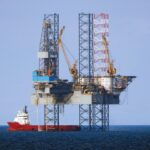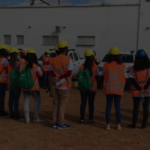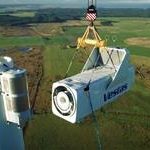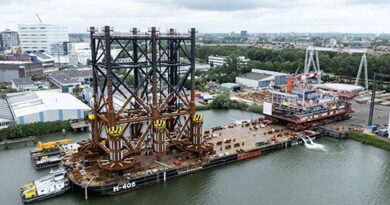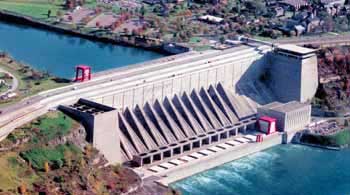Water Treatment With a Latin Beat
Energy Disrupter
Spread the love
by Debra Fiakas, CFA
The post “Water: Invisible Crisis” on December 6th highlighted the building problem of inadequate supplies of quality water in Latin America. The World Water Council’s Comision Nacional Del Agua reports that As much as one-third of the Latin America population lacks access to safe water. Unabated pollution and lack of water treatment have been identified as culprits. In South America, for example, 40% to 60% of water comes from aquifers that are subject to increasing pollution from untreated run-off from mining and agriculture operations.
Our survey of Latin America water sector in South America found an interesting mix of pollution abatement and water treatment suppliers and service providers in the region. European companies have set up shop in several of Latin America’s major cities and even a few U.S. and Canadian firms maintain at least a relationship with a local distributor. One might conclude that it is not lack of access to technology or expertise that is holding Latin American communities back from clean, safe water.
For the ambitious entrepreneur the shortfall in clean water is an opportunity for new business in Latin America. The astute investor could look for a strategy to participate. We look at several who provide immediate investment alternatives with publicly traded stocks.

Andritz Group SA (ANDR: VI, ADRZF: OTC) is primarily known for its equipment for hydropower stations and the pulp and paper industry. Make no mistake about it, this Austrian company knows water as well. Andritz has set up shop in Brazil with its Separation Segment that offers mechanical technologies for municipal water treatment, including filters, screens and separators. The company is well established in Brazil and could be a good partner for municipal operators. Andritz successfully set up the Santo Antonio hydropower plant in Brazil and regularly supplies Klabin’s pulp mill in Brazil.
In the most recently reported twelve months Andritz earned 3.6% operating profit on Euro 6.6 billion. The company converted 8.1% of those sales to operating cash flow. The cash flow is needed if Andritz intends to come down from its current leverage lever where the debt-to-equity ratio is 144.38. There is some competition for cash use. Andritz maintains a healthy dividend payout policy and the current forward dividend yield is 4.24%.
Japan’s Kurita Water Technologies Ltd. (6370: Tokyo, KTWIF: OTC/PK) provides water treatment solutions to various industries. Its specialty is treatment chemicals that can be used in boilers and cooling towers as well as industrial processes and wastewater treatment. Interestingly, the company has chemical products for use in biomass generation. Kurita can also set up turnkey water treatment facilities, including waste water reclamation systems.
Kurita has had boots on the ground in the state of Sao Paulo in Brazil since 1975. In 2011, the company opened a water treatment chemicals factory in Sao Paulo near Artur Nogueira.
Kurita’s shares are quoted on the OTC at a price that represents 20.8 times trailing earnings. That is not a particularly dear or cheap price, but investors might be swayed by the current dividend yield of 2.0%. The company earns about 10% return on equity and maintains a fairly modest leverage level with a 20.00 debt-to-equity ratio. Kurita has achieved top-line growth in each of the last five years and is habitually profitable. While cash flow from operations have varied year to year, over the last five years Kurita has converted 10% of sales to operating cash.
U.S. companies are not left out of the Latin America water treatment market. Unfortunately, few are publicly traded. Fluence Corporation (EMFGF: OTC, FLC: ASX) is a small company with big aspirations and interesting technology. Its engineers design and manufacture water and wastewater treatment systems for municipal, commercial and industrial applications. The company specializes in treatment of brackish water with its proprietary NIROBOX water desalination system. The EcoBox water reuse system offers strong cost/benefit for decentralized industrial water applications.

Fluence is headquartered in New York State and maintains a presence in Buenos Aires, Argentina. The company has been active in the Carribbean, recently installing a NIROBOX desalination system at a resort in Costa Rica. Fluence also implemented a wastewater treatment plant for the municipal government in Bordeaux, St. Thomas in the U.S. Virgin Islands. The treatment plant features Fluence’s proprietary MABR (membrane aerated biofilm reactor) modules that require as much as 90% less energy than the aeration methods used in competing sludge treatment solutions.
Fluence shares are widely listed on exchanges and quotation services around the world. Frankly speaking it needs all the friends it can find. The company has grown sales dramatically since inception in 2015, reaching the $100 million mark in just four years. Unfortunately, profits have not followed…as yet. The company has reported deep losses in all years. In the most recently reported quarter ending June 2019, Fluence had to draw $11.3 million out of its bank account to support operations. At the end of June the company had $16.5 million left on its balance sheet. The financial picture helps explain why Fluence shares are priced well below a buck and trade infrequently.
Foreign operations and unprofitable businesses mean risk. However, there is no doubt that each of these three companies provides solid value for their thirsty Latin American customers. They are worth consideration for the investor who wants to be part of the Latin America water solution.
Neither the author of the Small Cap Strategist web log, Crystal Equity Research nor its affiliates have a beneficial interest in the companies mentioned herein.
This article was first published on the Small Cap Strategist weblog on 12/10/2019.





